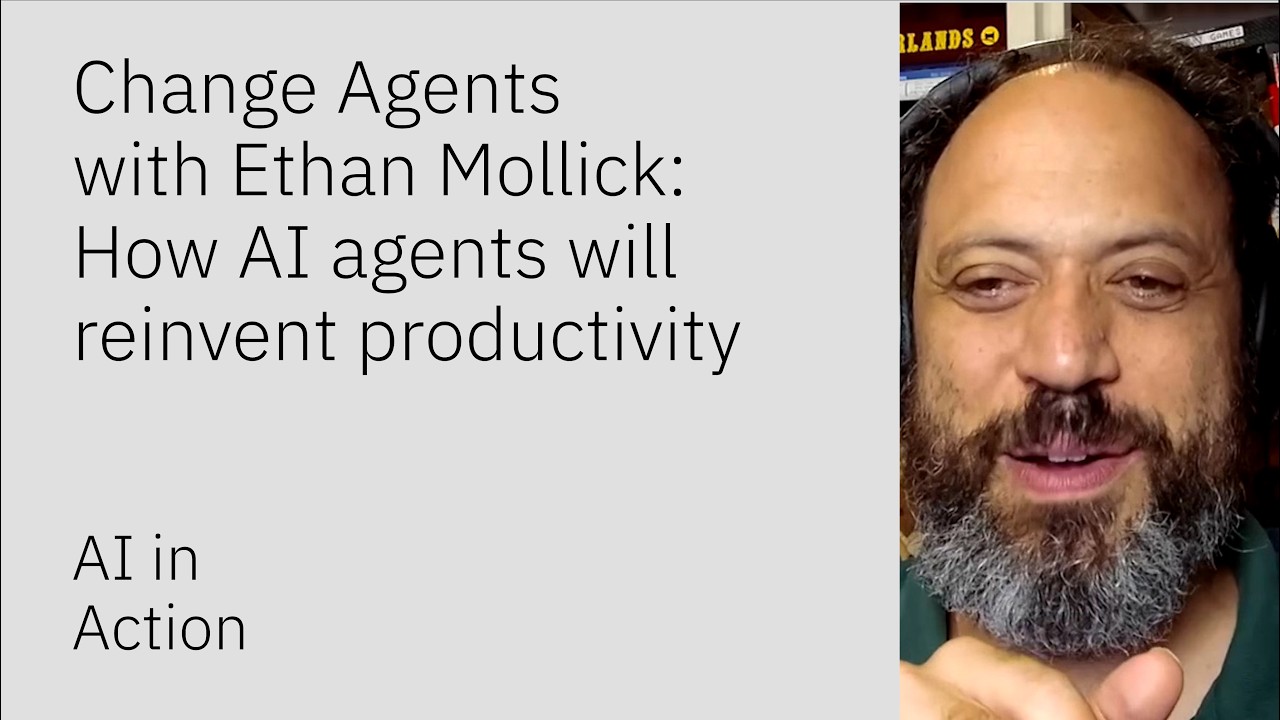Ethan Mollick discusses the transformative potential of AI agents on productivity, clarifying the distinctions between AI assistants, copilots, agents, and large action models, while emphasizing the need for organizations to adapt their structures to harness AI-driven improvements effectively. He highlights the importance of incentivizing employees to share their AI usage and encourages experimentation to fully realize the benefits of AI in enhancing productivity.
In a discussion about the impact of AI on productivity, Ethan Mollick, an associate professor at the Wharton School of Business, addresses the confusion surrounding various AI terminologies such as AI assistants, copilots, agents, and large action models (LAMs). He explains that AI assistants are typically chatbots like ChatGPT, while copilots are integrated tools that assist with specific tasks. Agents, on the other hand, are autonomous systems that can perform tasks independently, although they are not fully realized yet. LAMs refer to AI that can take actions based on user commands. Mollick emphasizes that the naming conventions in AI can be misleading and that organizations should focus more on understanding the capabilities of these systems rather than getting bogged down by terminology.
Mollick shares insights from a study conducted with Boston Consulting Group, where consultants using GPT-4 experienced a 40% increase in work quality and a 26% increase in speed. He notes that the quality of AI-generated work is generally high, particularly benefiting lower-performing individuals. However, he highlights that while individual productivity may increase, organizations often struggle to capture these gains at a collective level. To harness the benefits of AI, companies need to rethink their incentive structures and organizational frameworks to encourage employees to share their AI-driven productivity improvements.
To empower productivity gains, Mollick suggests that organizations should create reward systems that incentivize employees to showcase their AI usage. He mentions examples of companies offering prizes for automation efforts and stresses the importance of leadership demonstrating their own use of AI. Additionally, he points out that organizations need to address the question of what employees should do with their newfound productivity, as many companies have not yet considered how to adapt to these changes.
Mollick also discusses the potential of AI agents in the future of productivity, suggesting that they could become ubiquitous by 2024 or 2025. He believes that AI agents will be capable of performing tasks autonomously, such as conducting market research and generating reports without constant human direction. However, he acknowledges that current AI systems require user input and guidance, which differentiates them from fully autonomous agents. He emphasizes the need for experimentation within organizations to discover how AI can enhance processes and productivity.
In conclusion, Mollick encourages individuals and organizations to embrace AI in their workflows, emphasizing that it can significantly enhance productivity when used effectively. He outlines four key strategies: using AI for various tasks, recognizing that AI will take over certain job functions, simplifying interactions with AI, and understanding that the current AI technology is just the beginning. He warns that organizations must be aware of the gap between individual productivity gains and overall organizational effectiveness, as failing to address this could lead to missed opportunities in leveraging AI for growth and innovation.
